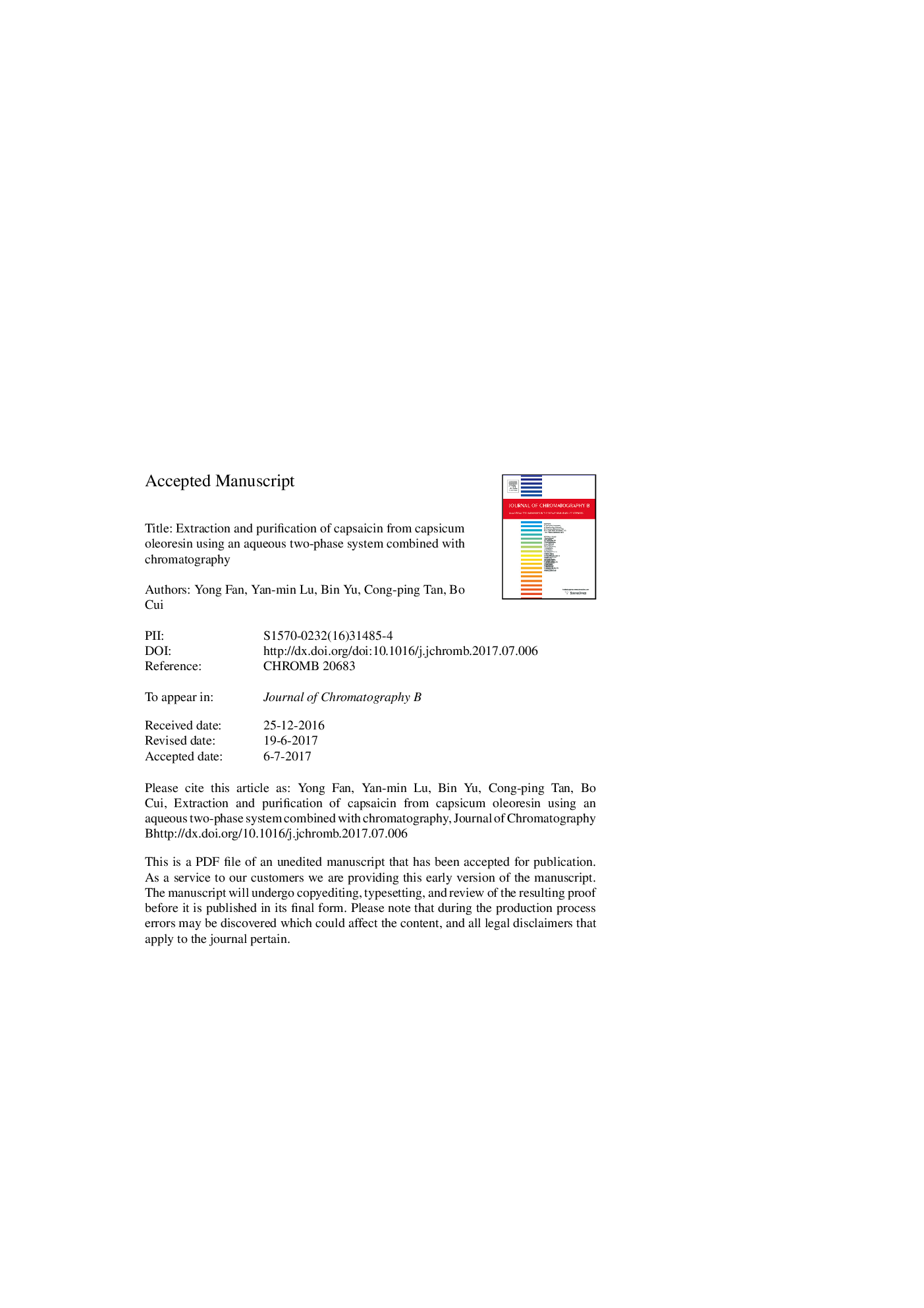| Article ID | Journal | Published Year | Pages | File Type |
|---|---|---|---|---|
| 5136216 | Journal of Chromatography B | 2017 | 38 Pages |
Abstract
Capsaicin was extracted from capsicum oleoresin using an aqueous two-phase system (ATPS) composed of an ethylene oxide-propylene oxide (EOPO) copolymer, salt and ethanol. Capsaicin was concentrated in the top polymer-rich phase. To determine the optimal conditions, the partitioning of capsaicin in the ATPS was investigated, considering a single-factor experiment including the salt concentration, polymer concentration, buffer pH, ethanol concentration, sample loading and extraction duration. Response surface methodology was applied to investigate the effects of the polymer concentration, buffer pH and sample loading on capsaicin partitioning. A capsaicin yield of 95.5% was obtained using the optimal extraction system, which consisted of 16.3% UCON 50-HB-5100/10% K2HPO4/1% ethanol, a buffer pH of 4.35 and 0.24Â g of capsicum oleoresin. Capsaicin was purified from the capsaicinoid extract using a two-step macroporous adsorption resin (MAR) method. After purification using non-polar MAR ADS-17, the recovery and purity of capsaicin were 83.7% and 50.3%, respectively. After purification using weakly polar MAR AB-8, the recovery and purity of capsaicin were 88.0% and 85.1%, respectively.
Related Topics
Physical Sciences and Engineering
Chemistry
Analytical Chemistry
Authors
Yong Fan, Yan-min Lu, Bin Yu, Cong-ping Tan, Bo Cui,
